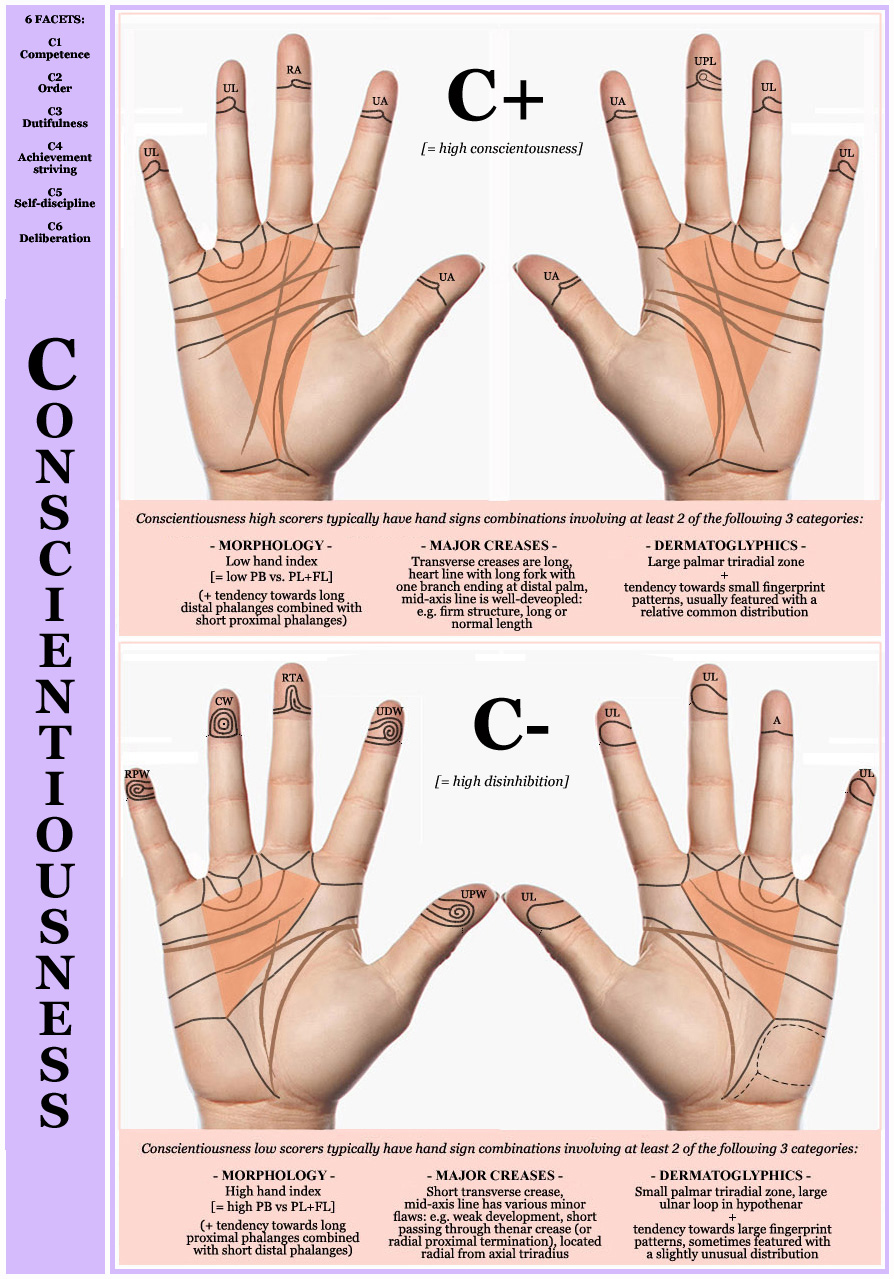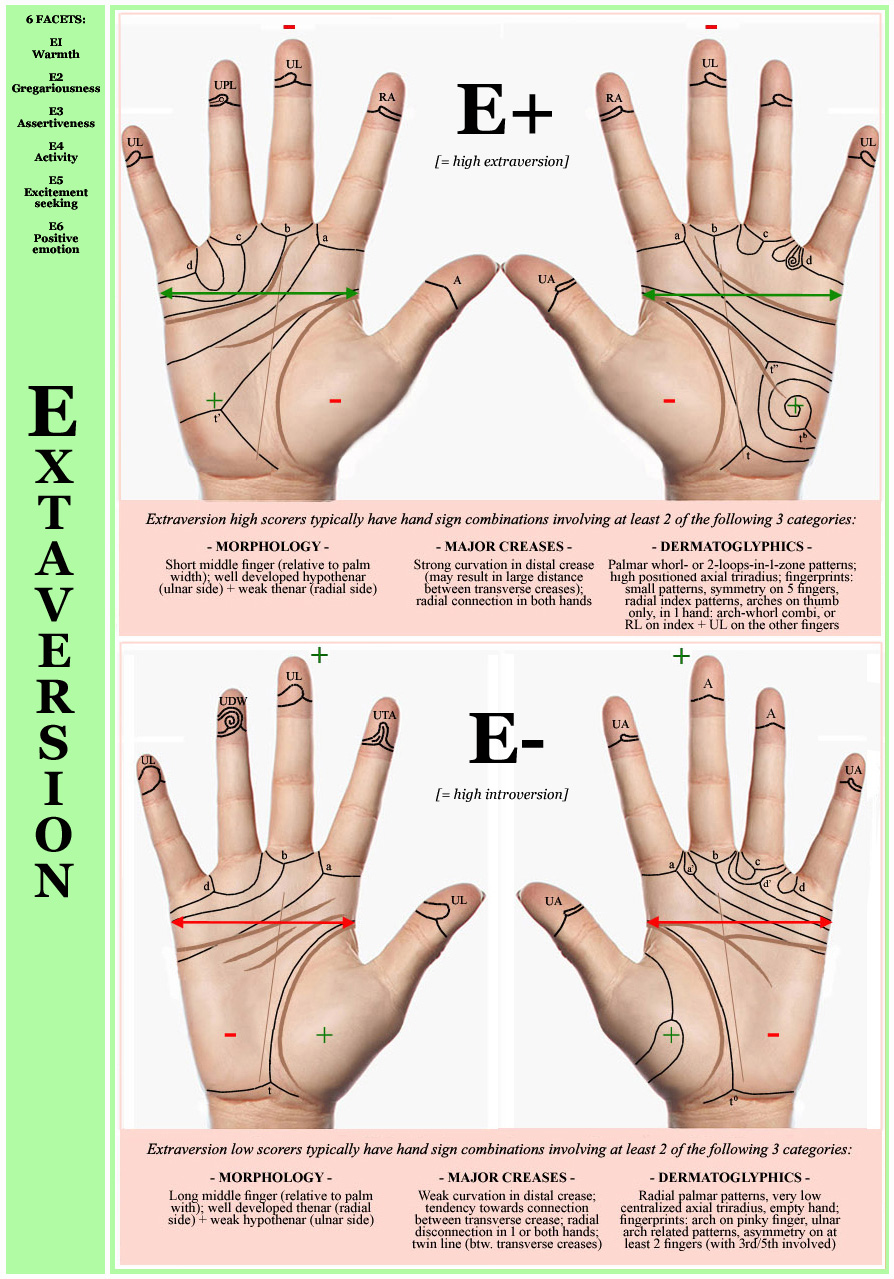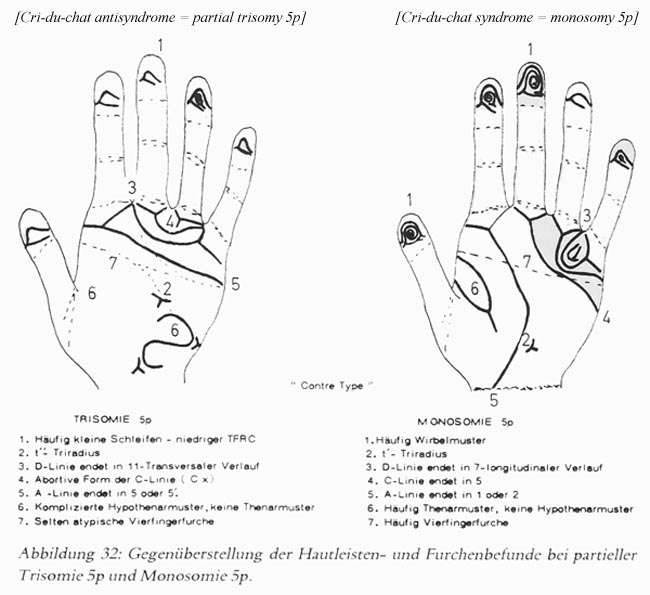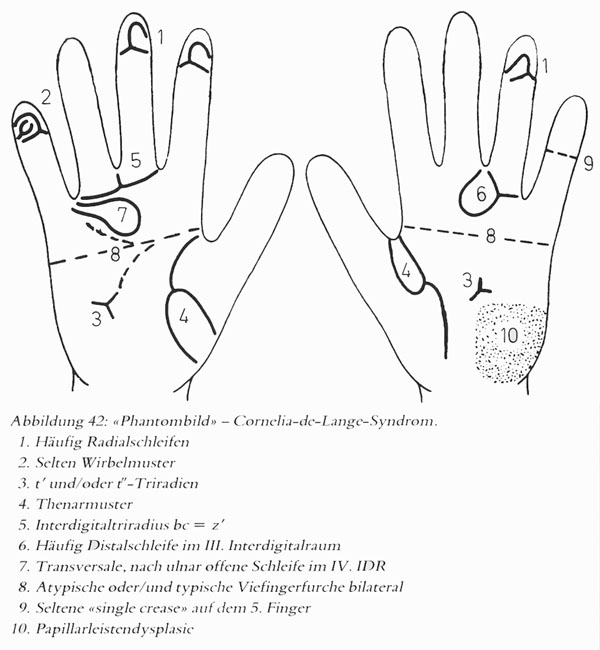
Scientific Hand Charts Collection:
XXYY syndrome!
1 Hand Chart for XXYY syndrome!
48, XXYY syndrome is a sex chromosome anomaly in which males have an extra X and Y chromosome. The syndrome was originally considered a variation of Klinefelter syndrome, and XXYY is still considered a variation of Klinefelter syndrome by some definitions - because the pathophysiology of the testicular dysfunction has not been shown to differ from 47, XXY, and the most current research does not suggest that there should be any differences in the evaluation and treatment of testosterone deficiency in 48, XXYY compared to 47, XXY. However, for the psychological and behavioral symptoms of XXYY syndrome, more extensive evaluations, interventions, and supports are usually needed compared to 47, XXY due to more complex neurodevelopmental involvement.
Prevalence: close to 1 in 30,000 male births have XXYY syndrome.
One superficial hand chart is available for XXYY syndrome describing only 3 characteristics in the dermatoglyphics, involving: 1) increased arches (occurs in 17%), 2) Mean ridge count reduced to 90-106, 3) atd angle increased: axial triradius associated with either arch-carpal (A) or loop-radial (B) hypothenar pattern - see picture below.
NOTICE: Individual hand features described below should not get associated in isolation with any theme; only combinations involving multiple hand levels have potential for diagnostic purposes.

Handbook of Clinical Dermatoglyphs (1971), p.44;
authors: M.S. Elbualy & J.D. Schindeler
Other significant hand signs (not reported inside the hand chart):
Because of hand tremors, XXYY males may have significant difficulties with writing; the development of a tremor typically starts in adolescence and worsens with age (source: Genetics Home Reference).
Parents of XXYY children recognized nail biting as part of the behavioral phenotype of XXYY (source: M. Tartaglia et al., 2008).
In one study a high prevalence of the simian crease has been reported: 21.4% (source: D.S. Borgaonkar et al., 1970)
Clinodactyly (curved-in pinky fingers) is recognized to belong to the most common physical features in prepubertal XXYY children - see picture below (source: M. Tartaglia et al., 2008).

All significant hand signs listed above for XXYY syndrome together cover five out of the nine perspectives of the hand as defined according Multi-Perspective Hand Reading (including hand level 1, 2, 5, 8 & 9).
A summary of the most significant hand sign combinations in XXYY syndrome is described here:
Decoding the language of the hand:
hand sign combinations in XXYY syndrome!
Hand charts are available for many other diagnostic issues;
start browsing HERE
![]() SCIENTIFIC HAND CHARTS: Introduction
SCIENTIFIC HAND CHARTS: Introduction
Hand charts for Big Five personality dimensions:
• Hand chart(s) for Agreeableness (2x: 1 in 4 people)
• Hand chart(s) for Conscientiousness (2x: 1 in 4 people)
• Hand chart(s) for Extraversion (2x: 1 in 4 people)
• Hand chart(s) Neuroticism (2x: 1 in 4 people)
• Hand chart(s) Openness (2x: 1 in 4 people)
Hand charts for diseases:
• Hand charts for hypercalcemia (1 in 4,000 people)
Hand charts for syndromes:
• Hand charts for arthrogryposis (1 in 10,000 people)
• Hand charts for cri-du-chat syndrome (1 in 30,000 people)
• Hand charts for Down syndrome (1 in 700 live births)
• Hand charts for Edwards syndrome (1 in 6,000 live births)
• Hand charts for fetal alcolhol syndrome (1 in 500 people)
• Hand charts for fragile-X syndrome (1 in 5,000 people)
• Hand charts for Holt-Oram syndrome (1 in 100,000 live b.)
• Hand charts for Kabuki syndrome (1 in 32,000 people)
• Hand charts for Klinefelter syndrome (1 in 1000 males)
• Hand charts for de Lange syndrome (1 in 15,000 live births)
• Hand charts for Marfan syndrome (1 in 5,000 people)
• Hand charts for Patau syndrome (1 in 15,000 live births)
• Hand charts for Prader-Willi syndrome (1 in 15,000 births)
• Hand charts for Rubella syndrome (1 in 100,000 people)
• Hand charts for Rubinstein syndrome (1 in 200,000 births)
• Hand charts for SLOS (1 in 40,000 births)
• Hand charts for Turner syndrome (1 in 2,000 female births)
• Hand charts for Warkany syndrome (1 in 200,000 births)
• Hand charts for Williams syndrome (1 in 14,000 births)
• Hand charts for Wolf-Hirschhorn syndrome (1 in 50,000 b.)
• Hand charts for XXYY syndrome (1 in 30,000 male births)
• Hand charts for XYY syndrome (1 in 1,000 male births)
• Hand charts for 18 deletion syndromes (2 in 40,000 live b.)
NOTICE: Reflexology hand charts are not included in this section because the scientific foundation of any of such charts is actually unknown; nevertheless, you can read more about the fundamentals of such charts HERE.

Other charts & maps:
• Fingerprints world map
• Hand reading experts world map
• Hand reflexology charts























